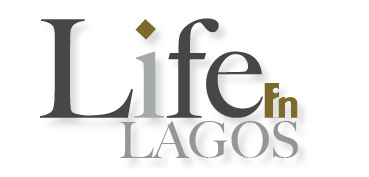Navigating the world of commercial real estate can often feel like decoding a complex puzzle, where every piece-from location to lease terms-must align perfectly to create a successful venture. Enter Dennis Isong, a seasoned expert whose insights illuminate the often intricate process of leasing commercial property. In this article, we delve into Dennis’s practical guidance, unraveling the key steps and considerations that can empower entrepreneurs and businesses alike to secure the ideal space. Whether you’re a first-time lessee or looking to refine your leasing strategy, discover how to approach commercial property leases with confidence and clarity.
Understanding Your Business Needs and Budget Constraints
Before diving into the leasing process, it’s essential to pinpoint what your business truly requires from a commercial space. Consider aspects such as location accessibility, square footage, layout flexibility, and proximity to suppliers or clients. This clarity not only streamlines your search but also ensures the space enhances your operational efficiency. Remember, a well-chosen property can support growth, foster a positive work environment, and even boost your brand image.
Budget constraints play a pivotal role in shaping your leasing options. Establish a clear financial framework by factoring in rent, utilities, maintenance fees, insurance, and any additional hidden costs. Below is a quick comparison to help visualize common monthly expenses when leasing a commercial property:
| Expense Type | Estimated Monthly Cost | Notes |
|---|---|---|
| Base Rent | $2,000 – $5,000 | Varies by location & size |
| Utilities | $300 – $700 | Electricity, water, internet |
| Maintenance Fees | $150 – $400 | Upkeep and repairs |
| Insurance | $100 – $300 | Property and liability |
By clearly outlining your business needs alongside your budget constraints, you equip yourself to negotiate effectively and avoid overextending financially. This thoughtful preparation turns the leasing journey into a strategic move rather than a mere transactional step.
Navigating the Legal Essentials and Lease Agreement Terms
Understanding the legal framework governing commercial leases is crucial for protecting your investment and ensuring a smooth rental experience. When entering into an agreement, focus on the clarity of terms and compliance with local commercial property laws. Key components such as the lease duration, rent obligations, and maintenance duties must be explicitly detailed to avoid costly disputes. Additionally, recognizing your rights and obligations empowers you to negotiate terms that balance your business needs with legal safeguards.
Be sure to review and clarify important clauses, including:
- Renewal and termination conditions: Understand when and how you can extend or exit the lease without penalty.
- Use of premises: Verify that your intended business activities align with property zoning and landlord approvals.
- Alteration permissions: Know what modifications you can make to tailor the space without breaching terms.
| Lease Element | What to Watch For |
|---|---|
| Security Deposit | Amount, conditions for refund, and legal limits |
| Rent Escalation | Frequency and method of increases over lease term |
| Landlord Responsibilities | Maintenance, repairs, and access for inspections |
| Subleasing | Permissions required and limitations |
Evaluating Location Benefits and Property Amenities
Choosing the right spot can make or break your commercial lease success. Look beyond just the address; consider proximity to major transport hubs, accessibility for clients and employees, and neighborhood growth potential. A thriving locale usually means increased foot traffic, better brand visibility, and easier logistics. Pay attention to the area’s demographic and economic trends to align your business with optimal customer bases and potential partners.
Equally vital are the amenities the property offers. Features like high-speed internet connectivity, ample parking, security systems, and flexible space layouts can streamline your operations and attract tenants or customers. Here’s a quick checklist to help you weigh the value of property perks:
- Parking availability: Convenient and sufficient parking options.
- Building infrastructure: Modern HVAC, elevators, and loading docks.
- Technology readiness: Infrastructure supporting fast internet and telephony.
- Safety measures: Surveillance, fire alarms, and emergency exits.
| Amenity | Impact Level | Ideal Business Types |
|---|---|---|
| Loading Dock | High | Retail, Manufacturing |
| 24/7 Security | Medium | Tech, Healthcare |
| Conference Facilities | High | Consulting, Education |
| Onsite Cafeteria | Low | Office, Co-working |
Negotiation Strategies for Securing Favorable Lease Conditions
Securing favorable lease terms requires a strategic blend of preparation and communication. Begin by thoroughly researching market rates and understanding the landlord’s position, which can give you leverage during negotiations. Focus on key elements such as rent price, lease duration, renewal options, and maintenance responsibilities. Being flexible on certain aspects can help build goodwill, but prioritize clauses that impact your business operations the most, like rent escalation limits or early termination conditions. Effective negotiation hinges on clear priorities and willingness to compromise.
Utilizing a structured approach can transform the negotiation process from a guessing game into a decisive advantage. Consider organizing your priorities with a simple table to present your requests clearly:
| Lease Element | Desired Terms | Negotiation Flexibility |
|---|---|---|
| Rent Amount | 5% below market | ±2% |
| Lease Duration | 5 years with renewal | ±1 year |
| Maintenance | Landlord covers structural repairs | Fixed internal repairs by tenant |
| Termination Clause | 60 days’ notice | Negotiable |
- Communicate clearly and professionally
- Leverage data to validate your requests
- Remain calm and collaborative, not confrontational
- Seal agreements with written documentation
Mastering these tactics not only helps you get better deals but also sets the stage for a positive landlord-tenant relationship that can benefit your business in the long term.
In Summary
In the dynamic world of commercial real estate, understanding the nuances of leasing can transform a daunting process into a strategic opportunity. Dennis Isong’s insights illuminate the path, guiding prospective tenants through the intricate steps of securing the perfect space. Whether you’re a seasoned entrepreneur or a first-time lessee, applying these principles can help you navigate negotiations, avoid common pitfalls, and ultimately lease a property that supports your business ambitions. As the commercial landscape continues to evolve, staying informed and prepared remains your strongest asset-making every lease not just a transaction, but a foundation for future success.




















0 Comments